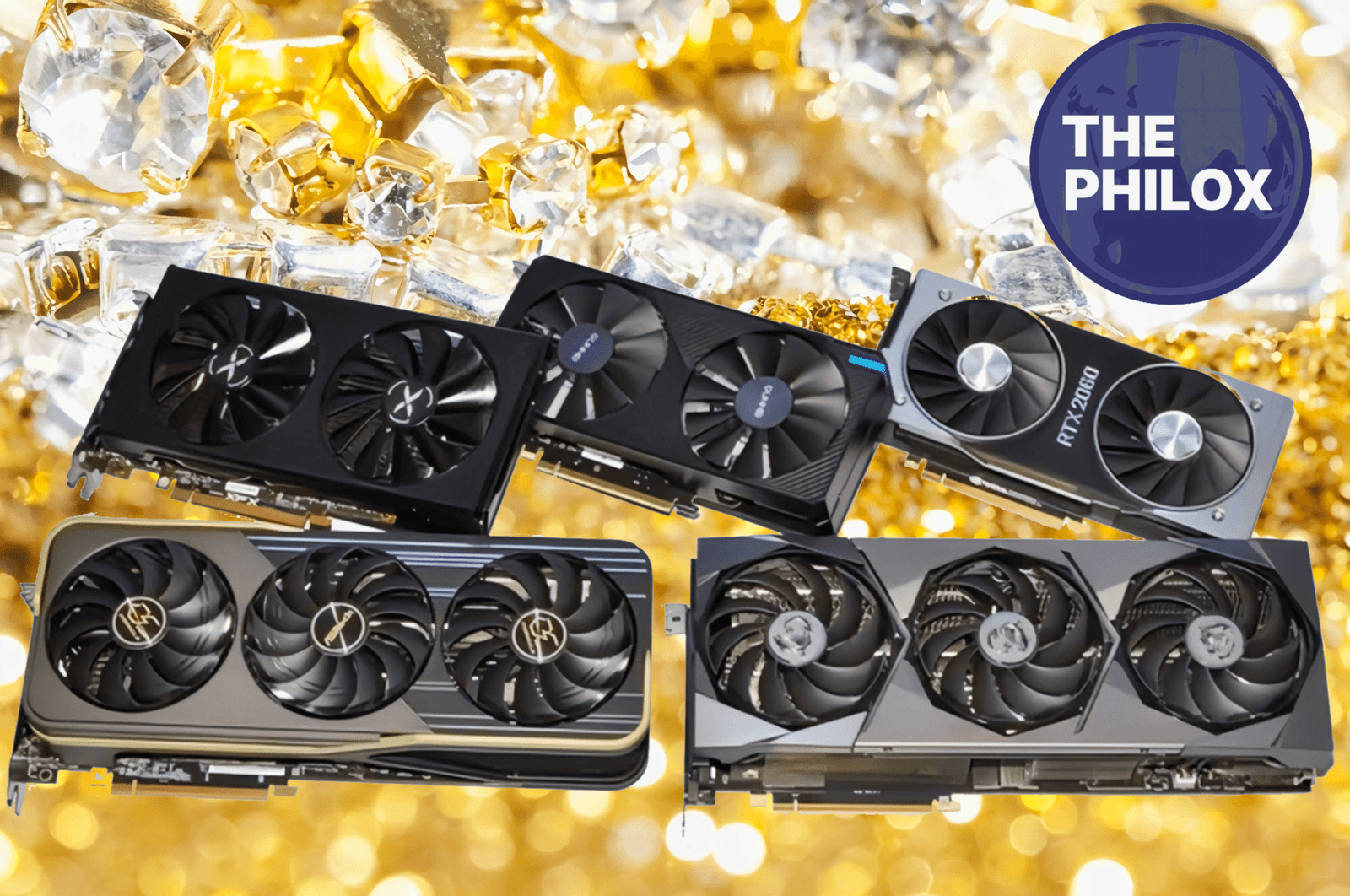Artificial intelligence witnessed its most unprecedented boom in the last few years, rendering industries in healthcare to finance and entertainment white with use.
At the heart of this transformation lies an essential technological component: graphics processing units, or GPUs.
What was once mainly associated with gaming has become the backbone of AI, such as in machine learning and deep learning, as well as generative AI applications.
These high-performance chips are in such demand that their price has skyrocketed, and graphics processing units are now likened to gold and diamonds.
The article would go on to discuss the transition from gaming to AI, the supply and demand dynamics, the manufacturing constraints, its impact on the gaming industry, and what this trend bodes for society at large.
The Shift from Gaming to AI
Initially, GPUs were developed to enhance gaming experiences by rendering high-quality graphics.
Companies like NVIDIA and AMD dominated the gaming GPU market, catering to the needs of gamers who sought higher frame rates, better resolutions, and immersive virtual worlds.
The use of GPUs, however, transcended gaming applications. Their capabilities in doing tremendous amounts of calculations made them apt for the requirements of AI and deep learning models.
Unlike traditional CPUs, which operate on one task at a time, a GPU can attend to tens of thousands of tasks simultaneously, which is highly effective for AI workloads.
First, and probably most striking for NVIDIA, which had long led the graphics processing unit market, was that its data center revenue surpassed its gaming revenue for the first time in 2020.
By 2024, that trend had intensified: the majority of NVIDIA’s overall revenue came from its data center business: 80%. The use of GPUs in AI applications has irreversibly changed the market dynamics while laying a solid ground for modern AI breakthroughs.
Surging Demand and Market Competition
Demand for GPUs increased with increase in the related research and deployments of AI. The tech giants, including Meta, Microsoft, Google, and Amazon, went on a shopping spree of buying GPUs to fuel their AI models.
- Meta had reportedly bought 350,000 of NVIDIA’s most powerful AI GPUs by the end of 2024.
- Microsoft purchased twice as many NVIDIA AI chips as its competitors to fuel its AI-driven services.
This translates to a gold rush scenario whereby companies are vying over bits of the hardware needed to be able to stay at par with the competitive advantage in the AI race. The company has this partnership with Oracle, another leading company in the tech industry, to scale AI services, hence the criticality of GPUs.
Manufacturing Constraints: Why GPUs Are So Scarce
The demand is high, but the production of GPUs is very time-consuming and a complex process as well.
1. Manufacture Time: It takes almost three months to come up with just one GPU because of how complex the fabrication process is.
2. Few Fabrication Plants: New semiconductor fabs take years to build and cost billions of dollars to create.
3. Advanced Materials and Processes: The production of GPUs requires materials that are truly cutting-edge, along with some precise engineering; therefore, there are only so many companies which can produce it at scale.
All these factors put together make an inelastic supply chain, thus impossible to ramp up production in time to satisfy the skyrocketing demand. It is this shortage that pushes the prices up and makes GPUs among the most expensive technological assets nowadays.
Desperation for GPUs: How Companies Are Responding
With the availability of GPUs running scarce, companies have resorted to extreme measures to keep them.
1. Whole Shipments: Tech giant companies are purchasing whole consignments of GPUs, compelling small companies to scramble for what is left-over and what they need so bad.
2. Global acquisitions: India alone; tech startups procured huge stocks of GPUs last year 2024 to clearly illustrate how hard companies will reach in order to obtain the computer power they seek.
3. Cloud-based GPU Leasing: Today some companies are leasing GPU power from the cloud providers. Even these have seen their prices rise because of the increased demand.
It only shows how important GPUs are in this generation of technology and, therefore, even more so in this century than oil was ever when the whole industrial world relied on it.
Impact on the Gaming Industry
Shortage of GPU: The most critical factor impacting the gaming market, as the game developers and their firms buying many GPUs in enormous quantities leave scarce units for games. It caused:
1. Gaming GPU shortfalls: many gaming graphics cards are sold out or are highly priced.
2. Higher Expenses for Gamers: The cheap prices to obtain these GPUs inflated so high in the market that it can’t be allowed to play some high-end game.
3. Gaming GPUs Leverage for Artificial Intelligence: With the current scale of usage in AI, sometimes companies have just used gaming GPU for the Artificial Intelligence tasks instead of being actually optimized for any such workloads.
This has left the gamers disappointed and the threat of an all-time spree that AI development is monopolizing the GPU supply, making it much harder for enthusiasts to build or upgrade their gaming rigs.
watershed prices: The Case of GPUs as New Gold.
The prices of GPUs have hit the roof for reasons of a perfect storm between high demand and low supply due to production limitations.
- By cases reported, the newly launched blackwell series by NVIDIA would sell for as much as gold for every unit of performance. Those are directly to be compared to precious metals.
- Second-hand GPU markets have really bloomed in areas where used GPUs sell for higher prices than what the retail market offers.
- Companies and research institutions reserve millions of dollars just to obtain GPU resources.
This price increase has made the GPUs a luxury commodity, almost like an art form, such as fine painting, rare coins, or precious metals.
Importance of the GPUs in Technologies
Why is the GPU required in AI design? Their worth lies in having:
1. Parallel Processing: AI models consume trillions of calculations per second, a capacity that GPUs do much better than CPUs.
2. Architecture Designed Optimized for Machine Learning / DL: All the latest GPUs have especially been designed following machine learning and deep learning applications.
3. Irreplaceable: As of today, as of date, unlike any equipment of the technological piece of equipment in the world, the GPUs cannot be replaced for large scale training of AI and also for the inferencing process.
All these factors sum up to make the GPUs as expensive as gold would be in aerospace and electronics, respectively.
Application Beyond: How AI Will See the Future for GPUs
The limited availability and high cost of GPUs have several significant implications:
1. Barrier to entry for startups: The high price of GPUs could stifle innovation, as small AI companies are not able to compete with tech giants.
2. AI power concentration: Only the biggest companies, with the capacity to buy GPUs, will lead AI development and create a pseudo-monopoly.
3. Risk of Government Interference: Since AI is a strategic tool, the government may intervene in GPU access regulation if accessed abroad or domestic manufacturing.
The above trend sets off warning bells for fair access to AI technology since only the richest firms can spend on resources to innovate at scale.
This has made it important AI infrastructure and most valuable commodities in the tech world owing to the revolution brought about by AI. And because of demand, the GPUs become unavailable, inflation pricing further fueling more AI developments going forward.
While GPUs shall remain the principal tool for new AI, burgeoning value and availability will increasingly give headaches to minor developers, gamblers, and the ecosystem-at-large.
If new manufacturing policies, regulatory acts, or any alternative AI computation solutions gain preeminence, the search to secure GPU resources will be one of the upcoming chapters of this AI era.
Stay Connected and Share Your Stories
For all those inspired by stories of resilience and ambition, follow us on X/Twitter and on Instagram . For those with untold stories that you would love to share, please send them to contact@thephilox.com




